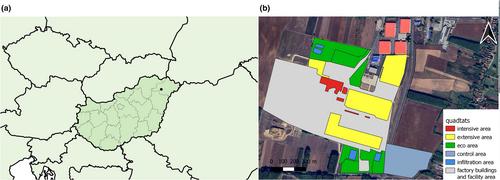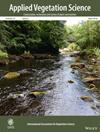Grassland reconstruction in a factory yard increases biodiversity and reduces costs of installation and maintenance
Abstract
Aims
The restoration of unused urban-industrial areas has great conservation potential as it can sometimes create a win-win situation in terms of nature conservation and economic benefits. Financial data of restoration projects are rarely published. To close this gap, we report the cost–benefit analysis of different landscaping methods used in the greening of the outskirts of a factory industrial area.
Location
The study area is located in a factory area in Nyíregyháza, Nyírség, Hungary.
Methods
In this study, we compare the costs of the implementation and maintenance of three different types of grasslands (intensively and extensively managed park lawns and semi-natural grassland, called eco area) and the ecological benefits in terms of vegetation and potential for pollinators.
Results
The implementation and maintenance costs of the extensively managed park lawn were more than ten-fold higher than that of the eco area, despite the higher price of native plant material. The construction of the extensive park lawn is the cheapest, but the eco area pays off in ca. 1.5 years compared to it, taking into account the lower maintenance costs. Seven years after implementation, the eco area is the most species-rich, hosting the highest number of natural constituent species, but with similar vegetation cover as in the intensively managed park lawn without costly maintenance. The cover and species richness of legumes and forbs are also higher in the eco area, ensuring a food source for pollinators.
Conclusions
Our results support that introducing species-rich and diverse grasslands with native, habitat specialist species as an alternative to traditional landscaping in urban-industrial areas can be economically and ecologically rewarding. The higher costs of planning, plant material, and implementation pay off in a short time due to low maintenance costs and can lead to a win-win situation for nature as well as for the local economy.


 求助内容:
求助内容: 应助结果提醒方式:
应助结果提醒方式:


